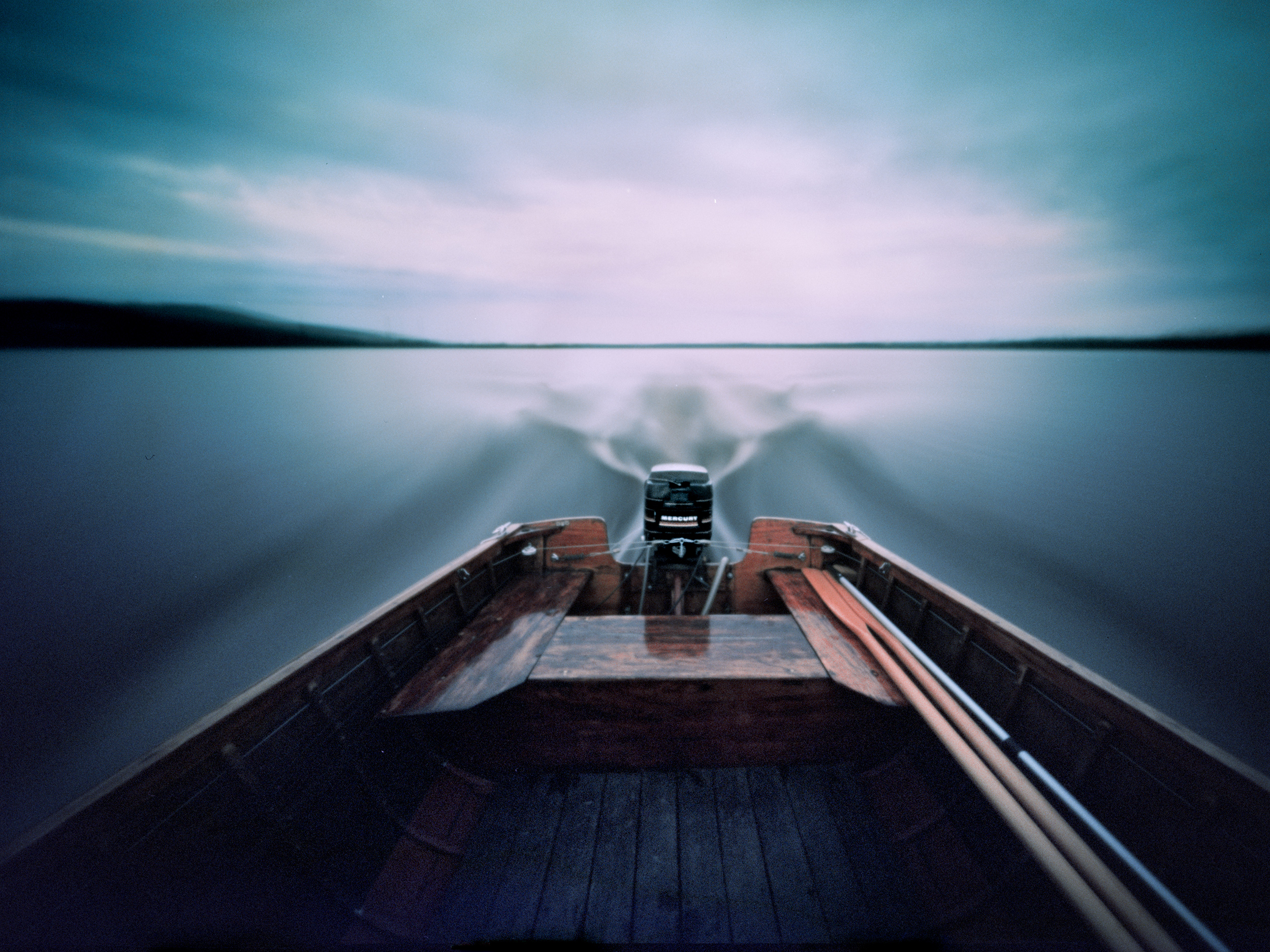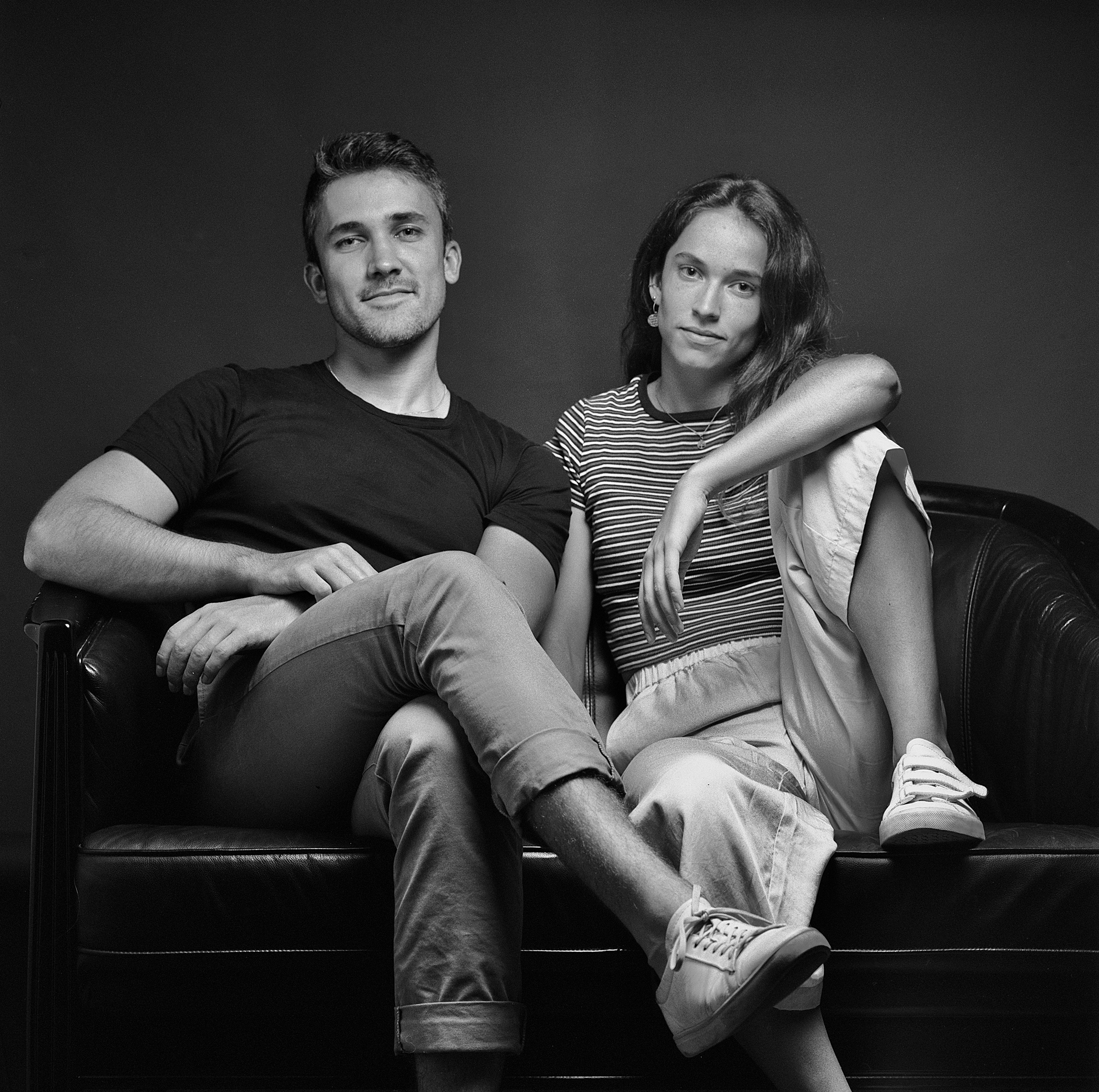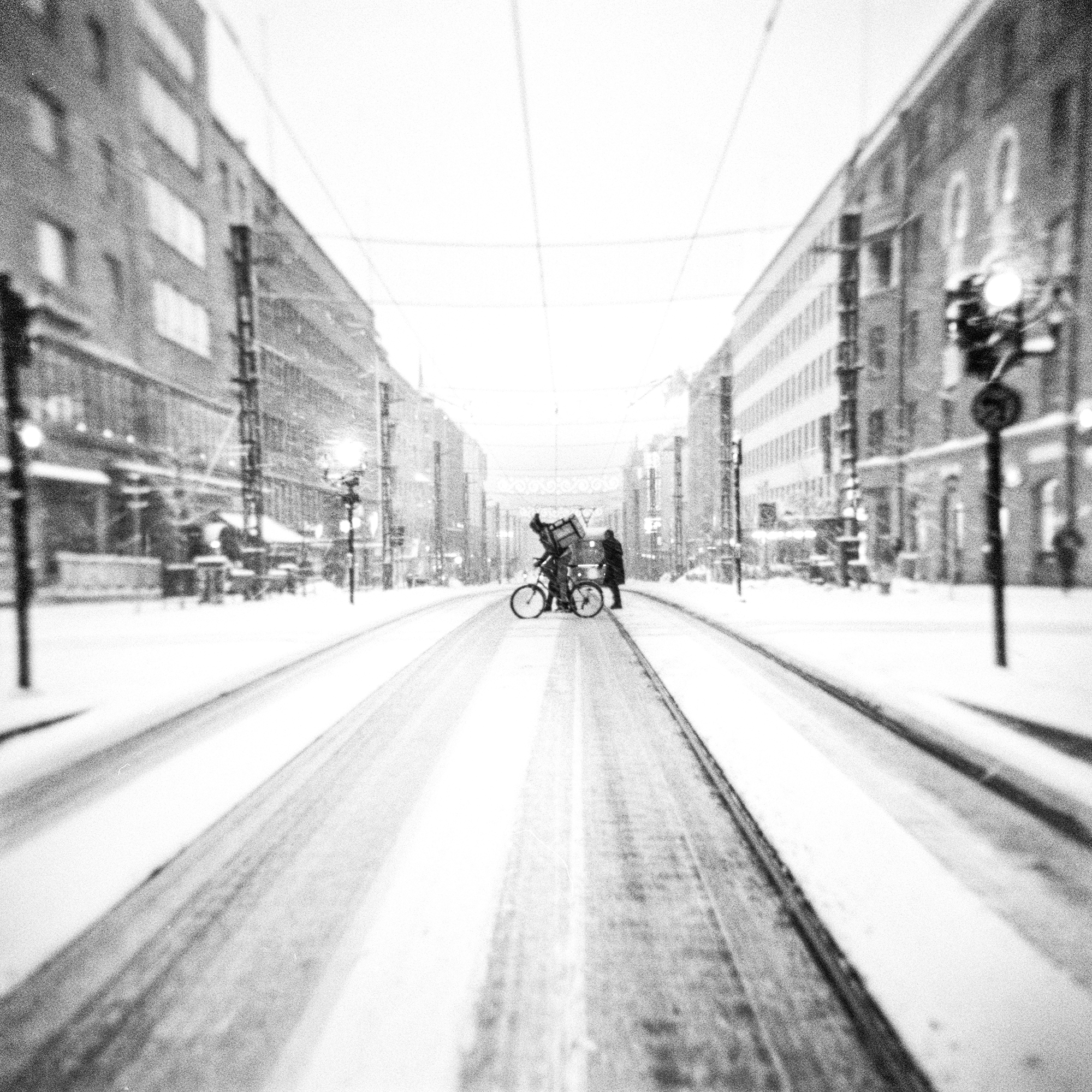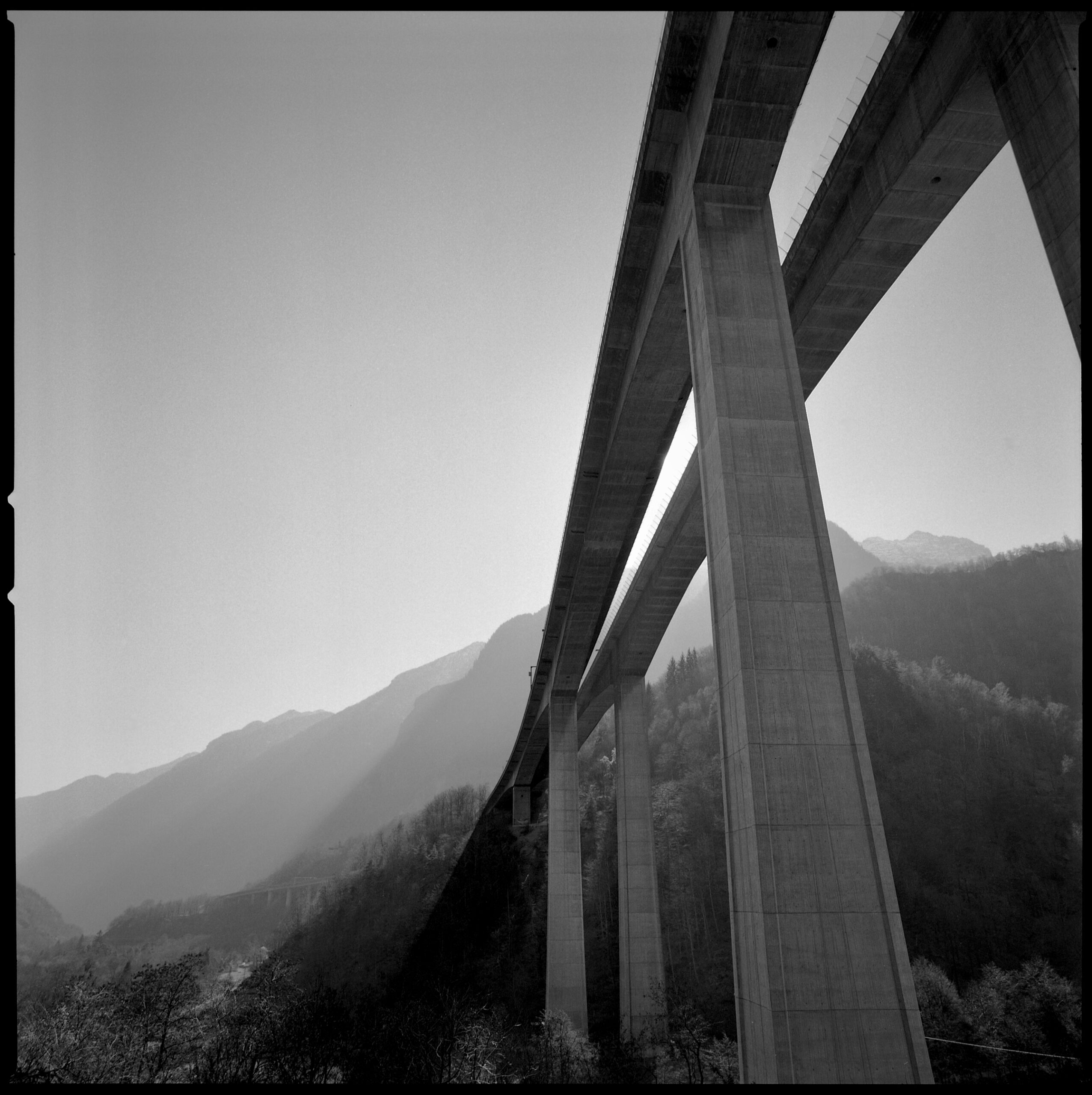“Why do you photograph with film?” “Digital photography is so much easier and cheaper, isn’t it?” “What could you possibly like about analog photography?”
Why am I always trying to answer these questions in my mind? “You’re still using film? Oh yes, I remember the days of film and the stinky darkroom. Thank God I never have to go back there.” Is there an undertone of condescension I detect there? Or is that a reflection of my own insecurity? Am I driven by missionary zeal to try and win converts? Or an attempt at explanation and justification?
After all, digital cameras are more reliable, easier to use, perhaps cheaper in the long run (although that is disputed in some circles), and produce magnificent images with ease.
I find confirmation in an e-mail I received from an Australian member of the FRAMES community: “Using film, my composition, settings, and exposures are always more considered. I feel I am a better photographer because I take my time making a picture.”
Or from the words on the website of the Swiss commercial and art photographer Christian Coigny: “I have always used film. I like the darkroom, the physical contact with my work. I like to know that people see a photo that has not been altered in any way, showing exactly what I saw, despite the fact that it is in black and white and not in color. These are the reasons why I use film and I will continue to do so until the end.”
I asked my twenty-two-year-old daughter what she and her friends find so fascinating about analog photography. “One reason film is ‘in’ again is the factor of patience and anticipation,” she said. “You must wait to see the results and can then relive the moment the photo was taken. It slows our lives down a bit. Also, the photos have a completely different look about them. And at the moment it’s cool to be a bit ‘retro’.”
She told me that most of her friends prefer point-and-shoot or instant cameras. They don’t want to have to worry about exposure settings. She, however, likes being in control of the results. “If I get a really good picture, it is because of me and not that technology made it more beautiful.” Seeing the whole process makes her appreciate the resources and time that go into making a photograph that you can hold in your hand. At a stage in life where she wants to be free, mobile, and not burdened by material things, she tries to travel lightly. “That includes not having a million pictures of the same object on my phone, just because it’s so easy and goes so fast.” An analog film camera fits the minimalistic life she is trying to lead at the moment. “It will never completely replace my iPhone camera, however, but I use my iPhone differently now, after my experience with film cameras.” Now that makes a film photography Dad’s heart swell!
These sentiments – deceleration, authenticity, veracity – are often dismissed as cliché. But I find sincerity in them and an attempt to put a label on another level of experience that is more difficult to articulate.

Lerouge 45 Pinhole Camera; Expired Fuji Provia Color Positive 4×5 film, cross developed with C41 color negative chemicals
To get even deeper into the question of what is attractive about film to me and millions of compatriots around the world, I again had a chat with my friend Ari Jaaksi in Tampere, Finland. He is a relative newcomer to photography and has thought long and hard about it. His insightful opinions can be heard on his YouTube channel Shoot on Film. “Here are a few recent thoughts on the subject,” he said. “A central idea for me is that the process affects the final outcome, regardless of how you create your pictures, or of what your photographic toolset or mindset is. Because I use film and the analog process, I do things differently from a digital photographer and I believe it shows in my results.”
That made me think of a talented and prolific digital portrait photographer in New York who recently said in an interview that during a sitting with a model, he generally takes between six and eight hundred shots. How should I, as a film photographer, react to that bit of insider information? With shock? Incredulity? Or even smugness? After all, with eight hundred shots, even I might be able to get a fantastic portrait out of a sitting. “No,” said Ari, “think of it this way: For good or for bad, if the model would know that now we have four, or twenty-four frames for the shoot, both he or she and the photographer would work differently during the sitting, and I believe it would show in the final result. Now, is that good or bad? Are the results then better or worse? I don’t judge that. Rather I’m interested in the parameters because they change the photography. He achieves beautiful results with his process. I achieve different, but beautiful results with mine.”

Hasselblad 500 C/M; Carl Zeiss Sonnar T* 150mm, f4; Fomapan 100; Fomadon Excel developer
When we film photographers go out to take pictures, we determine ahead of time which parameters we want to confine us for that shoot. We decide on the type of camera, the film format, the focal length of the lens, the type and speed of film and even the intended method of film development that will give us the desired results. And, as we all know and regularly experience, that confinement of possibilities encourages creativity.
A good example of this is the extraordinary work of the Chinese American photographer Baldwin Lee. In the 1980s he set out to photograph Black Southerners in the United States living out their daily lives against a backdrop of poverty and racial injustice. He took nearly 10,000 images within a couple of years, using a 4×5 view camera on a tripod, with long exposure times. This slow and methodical process automatically made his subjects into collaborators in the process. They waited while he set up his camera. They held their poses for the long exposures. The results are touching, provocative and full of meaning. The subjects, now involved in the image-taking, are clearly making their own personal statement in each photograph.
“There is another example of that going on right now in Ukraine,” Ari said. “There is a photographer there, Arsenii Gerasymenko, taking pictures of the war and the soldiers using a 4×5 Graflex camera. The results are similarly different. The same with Frank Thorp, who uses small, medium and large format film cameras to document the United States Congress for NBC News. So if a digital photographer asks me why I prefer using film, my answer is that, despite the fact that digital cameras are technically superior to my film cameras, or even that I perhaps lack the skill in using digital cameras, I just like the results more when I go through the analog process.”

Modified Holga (Holgon); Ilford HP5+ pushed to ISO 1600; Rodial developer
I agree with Ari. Personally, I am attracted to the challenges of mastering the technical process. My cameras have neither batteries nor chips. They relieve me of no decisions about the image-taking, nor do they warn me of my impending mistakes. But great is the satisfaction of producing a beautiful image, knowing that I, and only I, was responsible for every minute step in the process.
I love having, holding, using the cameras, these complex, miniature, mechanical miracles that are as old as I am, yet still going strong, housed in classic designs with classic sounds that digital cameras are still trying to mimic after 25 years! But then again, I also own a 23-year-old Vt 1100 C3 Shadow Aero, so maybe I just have a thing for old machines.
I love the tactile and sensual pleasures of loading, advancing, developing the film, hanging them to dry, cutting the negatives on the light box, filing them in sleeves, shuffling through contact sheets and proof prints. And I love the quiet time in the darkroom, my wonderful, private refuge where I can spend hours making contact sheets or perfecting the enlargement of a favorite image, while listening to Bach cantatas, Steely Dan or the FRAMES podcasts.
I love the fact that my children, should they be interested, will easily find my photographic work after I die, will be able to hold it in their hands, look at it, and see what had been driving me. Would they even know where to look in the cloud? Or want to?
Yet I know full well that these personal pleasures of mine are but annoying hinderances to others.
Still, the photos I make on film have a look and feel that the photos I make on my iPhone –as beautiful as they are, though through no skill of my own – don’t have. It’s hard to describe. I can’t really tell you what it is or why.
Ari related a strangely comforting thought. “A friend of mine introduced me to the novel idea of digital photography liberating analog photography. What he meant by that was that now one can do all the fun stuff with analog photography, creating the work you want and having fun with it, whereas digital must now do all the heavy lifting, all the professional, high-pressure, client-oriented work. Analog can now fly free and do whatever it wants to do. I kind of like that description,” he said.
So do I. It helps let us think of film as a further tool in our kit to create something new and unique with our photography.
The next time you are moved to “Recreate the look of old school photography with Adobe Photoshop Lightroom film presets,” as Adobe encourages on their website, consider digging out your old Nikon or Hasselblad instead and creating the look, rather than recreating it. I would love to hear about your experience.

Hasselblad 500 C/M; Carl Zeiss Planar T* 80mm, f2.8; Ilford FP4+; Fomadon P developer
ABOUT THE AUTHOR
Stephen Smith is a professional choral and orchestral conductor and an amateur photographer and linguist. His photographic interests are in analogue medium and large formats. Born and raised in the USA, he has lived as a dual-national in Switzerland for 40 years.





Achim Kroepsch
May 17, 2023 at 09:08
…and it is the picture that counts…whatever you are using…nothing else
Stephen Smith
May 18, 2023 at 19:39
So true! Thanks for your comment.
SWD
June 2, 2023 at 00:12
Love this. And it’s AI free.
Stephen Smith
July 5, 2023 at 15:47
That it is! 🙂
Mats Sandelin
July 4, 2023 at 14:47
So true. ! Thank you for putting all this in words.
Stephen Smith
July 5, 2023 at 15:48
And thank you for taking the time to read it!